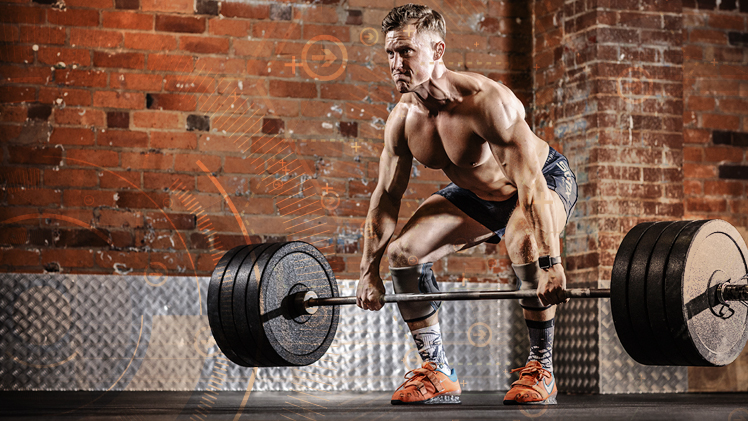We all know that exercise is good for us, but how many of us actually understand what happens to our body when we put it to the test, and why it is even good for us in the first place? Understanding what is going on in different part of our body when we exercise is key to working out in the right way – ensuring maximum gains and minimum damage. So with that in mind we thought we’d give you a helpful breakdown of the science behind your training session.
What is happening in…
Your Muscles
Your muscles need fuel during exercise to contract muscles and spur movement. This is found in the glucose that we get from food, which is stored within each muscle as glycogen. Glycogen is released during high intensity exercise.
During a high intensity workout we also use adenosine triphosphate (ATP) – ATP transports chemical energy within cells for metabolism.
The body only naturally stores small amounts of glucose and ATP and after using up these supplies requires extra oxygen to make more ATP. This is why our respiration rate, and pulse increases as we exercise as our body is trying to take in as much oxygen as possible. To allow a greater flow of oxygenated blood, your capillaries (microscopic blood vessels) dilate, which is why the skin will often appear red during and after exercise. Your muscles may also appear bigger during exercise as the blood rushes to the surface.
If we don’t get enough oxygen, lactic acid will form which causes soreness in the muscles and may lead to a forced recovery of the muscles. This is why it is important to regulate your breathing during exercise and take regular breaks to prevent over exertion. This is why interval training can be so successful in building stamina.
How do your muscles grow?
Muscle growth happens when the rate of muscle protein being converted is greater than the rate of muscle protein being broken down. Contrary to what you might expect this does not happen whilst you are working out, but whilst you are resting.
There is debate on when the optimum window for muscle growth is, however if you abide by the 30 minute rule then protein shakes are one of the easiest options for getting protein into the body quickly, why not try a shake such as PRO 2GO® PROTEIN for maximum growth after your workout.
Your Joints
All of your joints that have free movement such as your knees, shoulders and elbows are called synovial joints. They are all lubricated with a substance called synovial fluid, which is produced naturally during exercise to lubricate the joints and allow an easier and increased range of motion. As this fluid is released gradually, (the reason for warming up before taking part in strenuous exercise), it allows the body a chance to start lubricating the joints.
Essential fatty acids are linked to joint health and have anti-inflammatory properties, so supplementing with a high strength blend of fish oils and Omega oils is a must for anyone who trains with weak or painful joints – try 3 caps of TRI OMEGA EFA™ per day. Secondly, hydrolysed whey protein has been studied for its beneficial impact on both muscle and ligament growth, so a serving of quality whey such as ULTRA WHEY™ PROTEIN before and after training is ideal to support physique development and joint repair.
Your Lungs
We already know that your body requires more oxygen when you exercise- actually it may need up to 15 times more oxygen. Your breathing rate increases up to the movement capacity of the muscles surrounding the lungs. This is known as the VO2 max. As you become fitter, this VO2 max will rise, and with an increased oxygen capacity you will gain increased movement, stamina and muscle power.
Your Heart
As your breathing rate increases so naturally does your heart rate as it works towards pumping oxygenated blood around your body. Whilst the average resting heart rate would be around 60 to 100 beats per minute, your heart rate during strenuous exercise can rise to between 180-200 beats per minute.
After your workout it will gradually return to a resting heart rate – a person’s fitness is often calculated by how quickly their heart can return to its resting rate during the period after exercise.
Along with the number of beats per minute, the amount of blood being pumped per beat also increases and blood is diverted from the digestive organs to the muscles.
Over time, exercise also stimulates the growth of new blood vessels, causing blood pressure to decrease in fit people.
Your Brain
The increased blood flow going to the rest of your body also benefits the brain. This is the reason that you feel more alert and focused during exercise and afterwards.
We have all heard about exercise releasing ‘endorphins’ which make us feel more positive and focused. This is caused by a surge of neurotransmitters (a chemical messenger in the brain). Serotonin, a neurotransmitter which affects mood is also released when you exercise, explaining why study after study has shown that regular exercise significantly cuts down the risk of depression
Can You Over Train?
Every time you work out your muscles and bones are damaged and need time to recover. This is why rest days are so important. Giving your body 24 hours to heal itself after a heavy session means that the muscles heal and are ready for the next time. Regularly missing rest days can cause on-going damage to your muscles, make them more likely to tear, and reduce your ability to train at the same level.
















